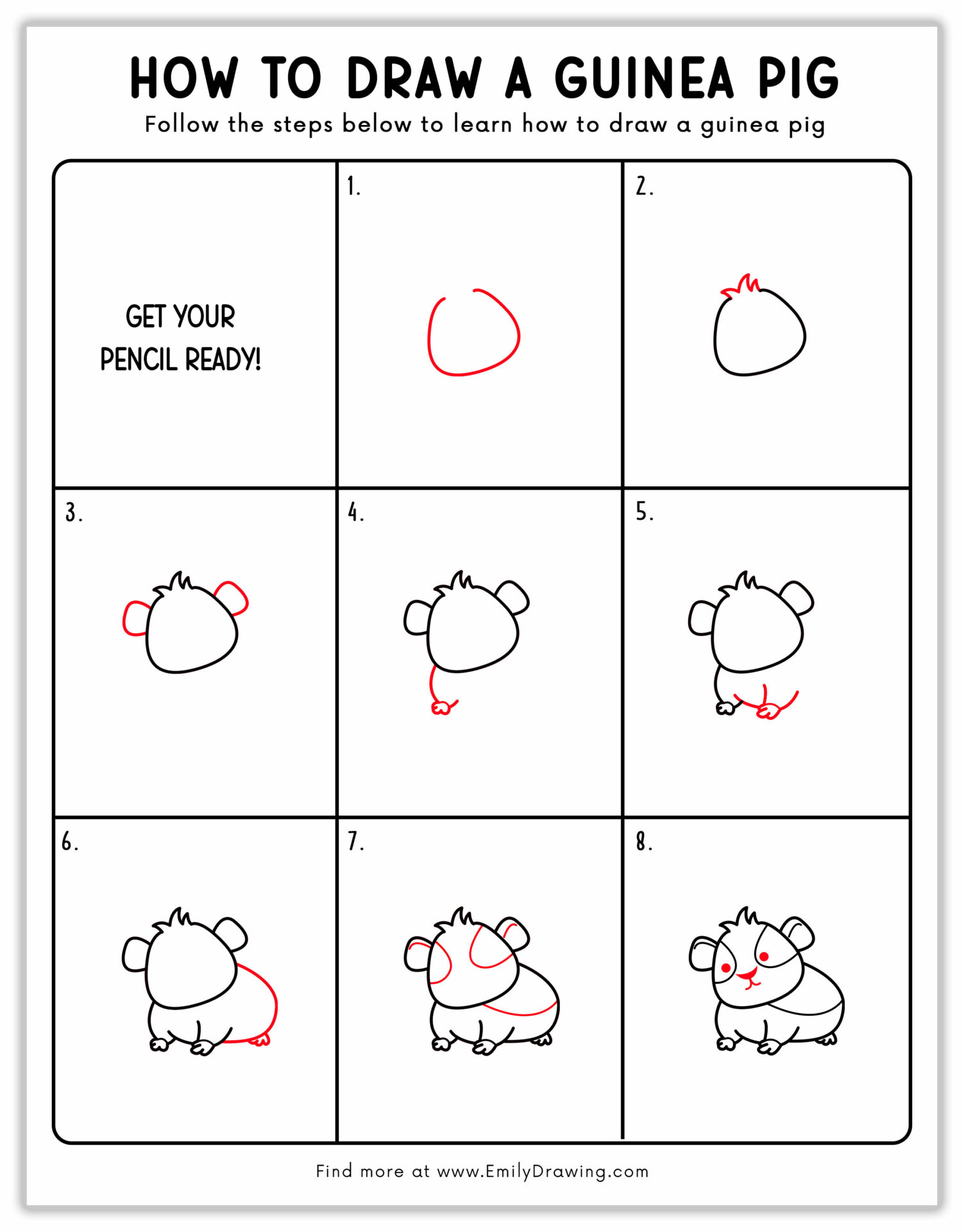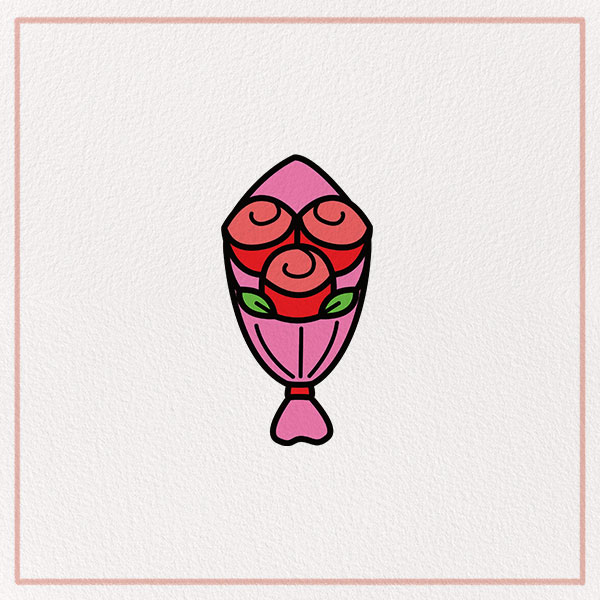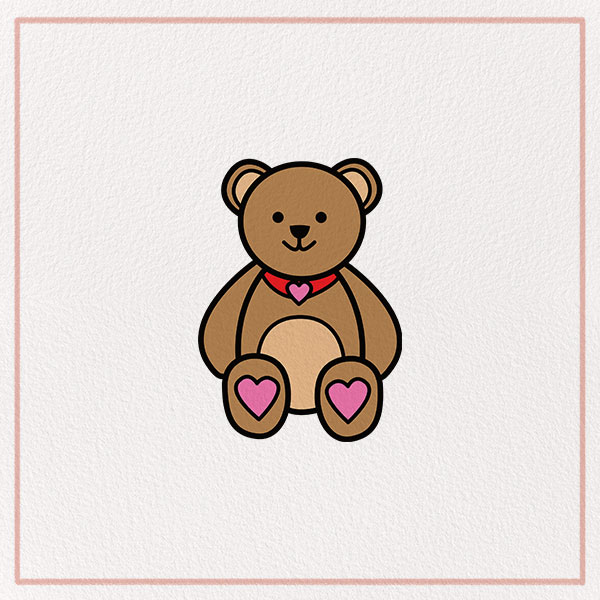Hello, and welcome to another tutorial by Emily Drawing! Today’s tutorial is all about drawing the guinea pig! If you’re interested in similar small animals, check out our tutorial on how to draw a gerbil too. We’ll go through nine easy steps to draw this little mammal.
Known as pups, baby guinea pigs are about 3 to 5 inches long and weigh 3.5 ounces to 120 grams. Despite their small size, they can still open their eyes and run around—similar to baby mice, as you’ll see in our mouse drawing tutorial.
As an adult, guinea pigs are around 8 to 19 inches long and weigh 30 to 35 ounces. They’re also about 5 inches tall. Guinea pigs are considered adults at six months old.
It’s time to get started on this tutorial for how to sketch a guinea pig with easy, step-by-step instructions. Grab your colored pencils or markers, and learn how to draw this small animal.
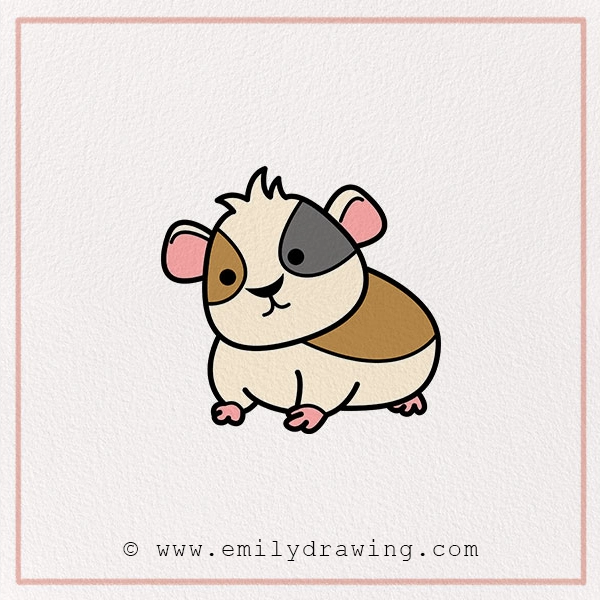
Materials:
- a piece of paper
- a pencil for the guiding lines and sketching
- an eraser
- a black Sharpie or a pen for the outlines
- markers or colored pencils for coloring
- our printable drawing guide (Join my Email List below to get this Tutorial)
Here are my RECOMMENDED Art Supplies!
- Crayola Coloring Set (140 Pieces – Mega Value!)
- 24 Colored Crayon Set
- A4 Printer Paper
- Crayola Coloring Pencils
- HP Home Printer with Instant Ink!
Time needed:
15 minutes.
How to Draw a Guinea Pig — Let’s get started!
Step 1 – Draw The Guinea Pig’s Head
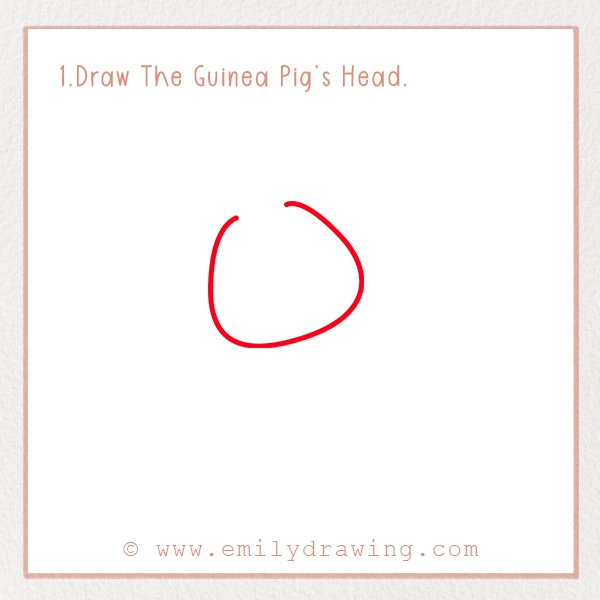
The first step is to draw the guinea pig’s head, which is just a round shape. In reality, a guinea pig’s head is large compared to the rest of their body. Be sure to leave the top open for the next step.
Step 2 – Draw The Guinea Pig’s Crest
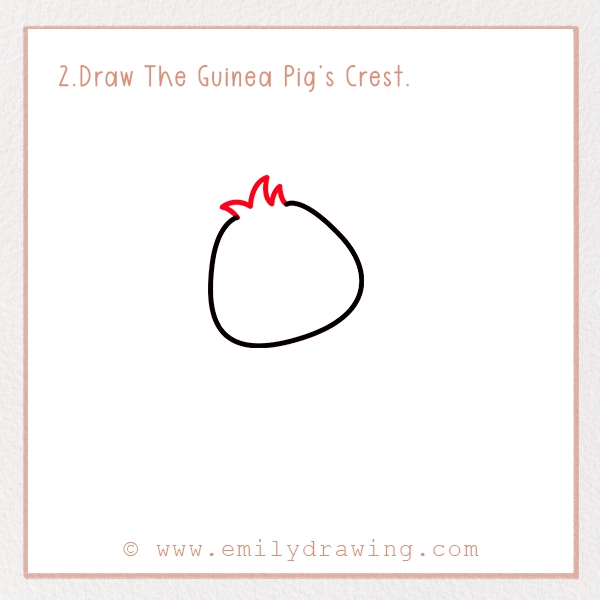
Next, you’ll draw the guinea’s pig crest in the open space at the top of its head. Think of it as giving the guinea pig some hair. The crest is fur or tuft that stands up on its own, creating a crown shape.
Step 3 – Draw The Guinea Pig’s Ears
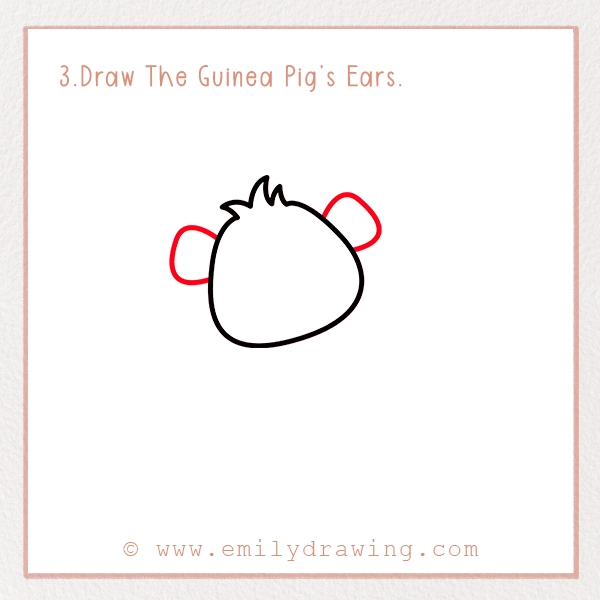
For this tutorial, you’ll add the ears in one of the first steps. The ears are flat and oval-shaped, with one on each side of the guinea pig’s head. Did you know that guinea pigs have better hearing than adults? They can especially hear low and high frequencies.
Step 4 – Draw The Guinea Pig’s First Front Leg
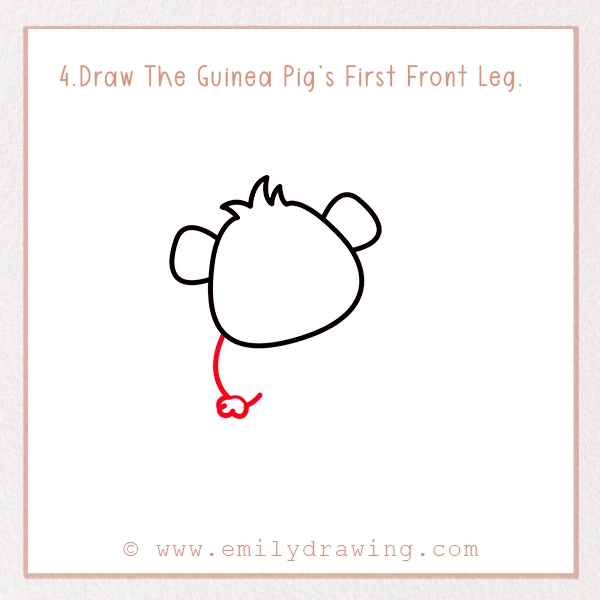
Now, you’ll draw the first front leg. It should look like an arm with a paw. Guinea pigs have larger front paws than rats. The front paws have four toes, but you can draw three for these paws. Each toe has a sharp claw, which is used for digging, burrowing, and scrambling overhead surfaces in the wild.
Step 5 – Draw The Guinea Pig’s Second Front Leg
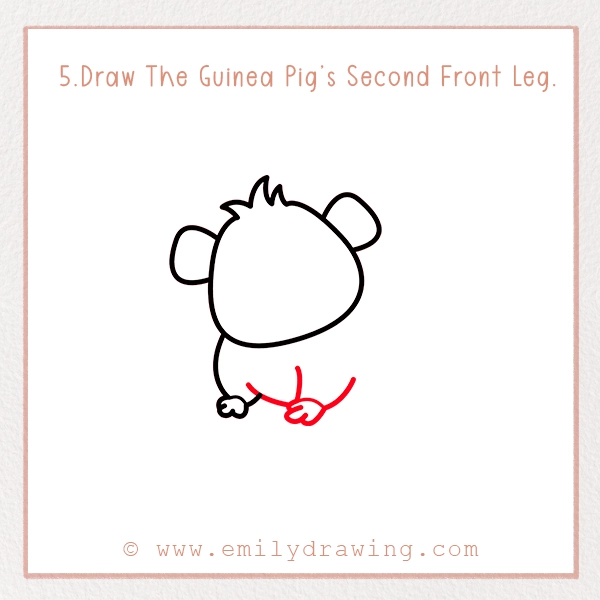
The next step is to draw a short, slightly curved line for the belly, and then add the second front paw. This paw should overlap the belly because it’s in the front. Be sure to add the paw and toes as well. In captivity, their claws need to be trimmed regularly to prevent discomfort, pain, and infections.
Step 6 – Draw The Guinea Pig’s Backside
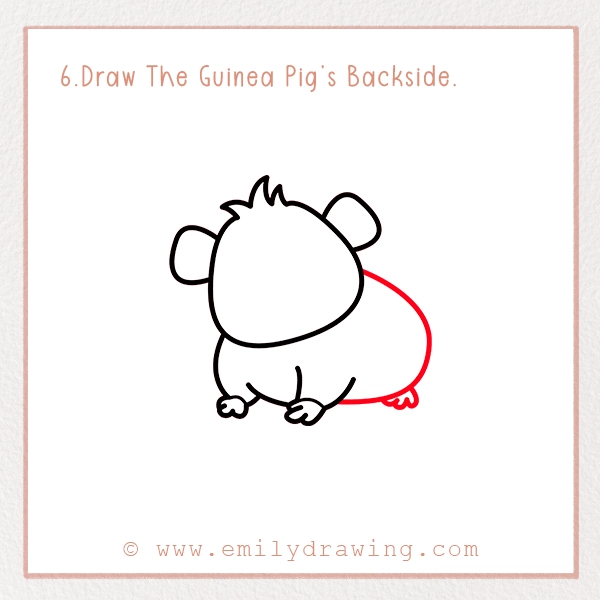
To draw the backside, you just need to finish the shape of the guinea pig’s body, which is sort of a wide, round shape. Then, you’ll add a small paw to the bottom. The guinea pig is slightly facing the side, so you’ll only add one paw and keep the legs hidden.
Step 7 – Draw The Guinea Pig’s Markings
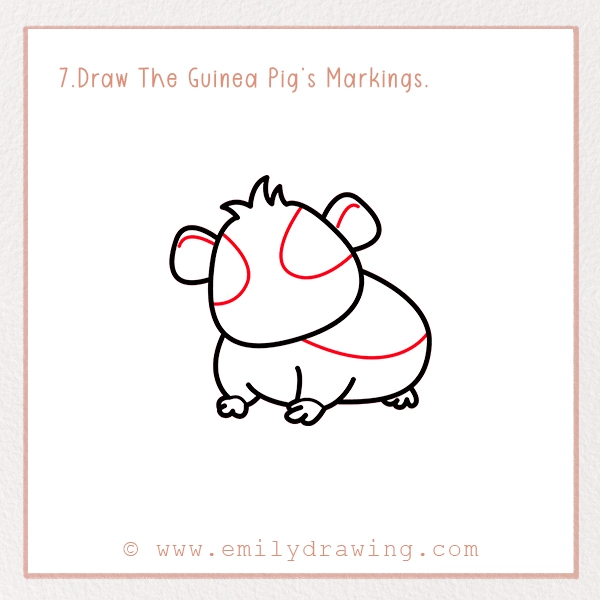
Next, you’ll add the guinea pig’s markings. The markings are actually on the guinea pig’s eyes, muzzle, and belly, as well as small patches near their ears. Those small patches are called “pea spots.” For our tutorial, you’ll draw the markings on the eyes and back.
Step 8 – Draw The Guinea Pig’s Face
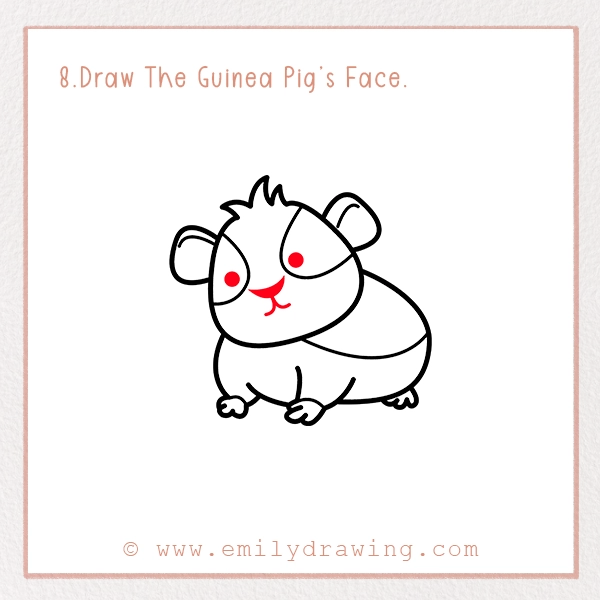
The final step in drawing the guinea pig is to add its face. First, you’ll add two dots for the eyes, with one in each marking. Next, you’ll add a rounded, upside-down triangle for the nose. The top of the nose curves inward a little more than in other animal tutorials. Lastly, you’ll attach the mouth, with two small curves to give the guinea pig a slight smile.
Step 9 – Color In Your Drawing!

Now, it’s time to color in your cute guinea pig illustration to bring it to life! Guinea pigs can have up to three colors on their coats, and those colors are usually black, white, or red, but the coat isn’t limited to these colors. Our guinea pig is an off-white shade with light brown markings on the back and one eye, and a gray marking on the other eye. The paws and inner ears are pink. You also want to color the background of your picture to create a beautiful environment for your guinea pig.
Pin it now, Draw later!
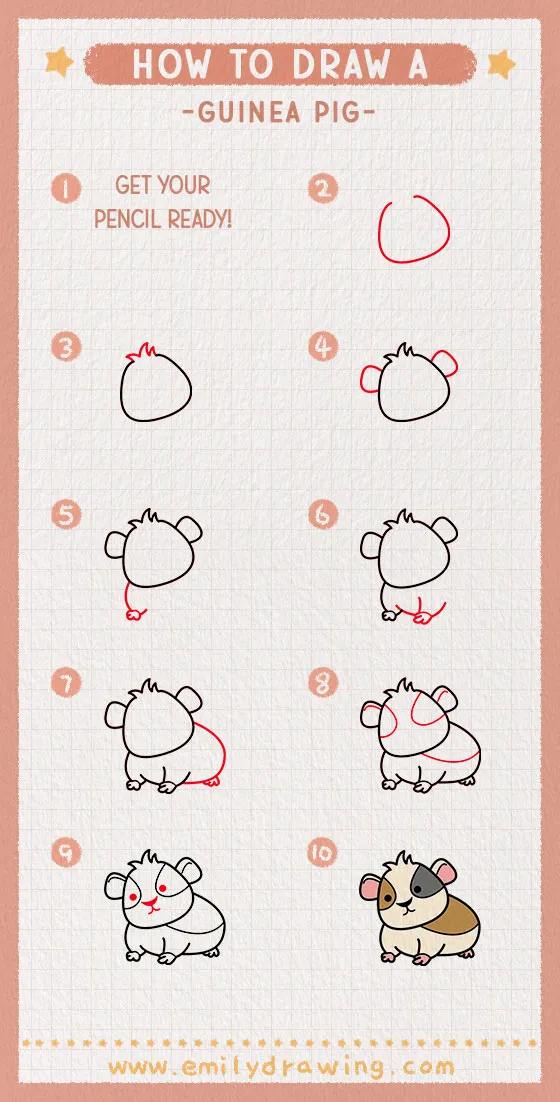
Interesting Facts About The Guinea Pig
The natural habitat of guinea pigs is the Andes mountains of South America. However, guinea pigs were domesticated over 500 years ago. They also live in habitats ranging from forests and deserts to savannas. Despite being domesticated for so long, guinea pigs can still adapt to tough climates, with some exceptions.
As pets, guinea pigs should be kept out of direct sunlight because they cannot sweat and are prone to heat strokes. They should also be kept out of humid conditions. Their preferred temperature is 65 to 79 degrees Fahrenheit. It’s also important to provide a spacious enclosure for running around and playing.
Did You Know?
- Guinea pigs are not part of the pig family, despite their name. They’re rodents in the Caviidae family, while pigs are hoofed mammals in the Suidae family.
- The average lifespan of a guinea pig in captivity is 5 to 8 years, but some can live up to 14 years. In the wild, they live 1 to 4 years because of the harsher environment.
- In captivity, guinea pigs eat hay, pellets, fruit, and vegetables, and they require vitamin C because they cannot produce it on their own. In the wild, their diet consists of fresh grass, herbs, seeds, bark, twigs, various plants, and the occasional roots.
- Guinea pigs are social animals that live in groups. Even in captivity, it’s best to keep more than one guinea pig, just like other small rodents such as mice, who are also very social. However, females are not usually kept with more than one male.
We hope you had fun with our “How To Draw A Guinea Pig” tutorial. You’re welcome to share your drawing with us by posting on social media with #EmilyDrawing! If you’re interested in drawing other small animals, or even bigger animals, browse the tutorials on our site. We offer many easy drawing tutorials, including an adorable guide to drawing a gerbil that you might enjoy.
